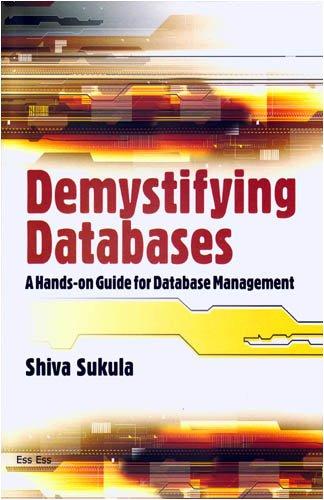Question
The following table specifies a cryptosystem based around a very simple encryption algorithm with four different plaintexts A, B, C and D (one corresponding to
The following table specifies a cryptosystem based around a very simple encryption algorithm with four different plaintexts A, B, C and D (one corresponding to each column) and four different ciphertexts A, B, C and D. The encryption algorithm has five different keys K1, K2, K3, K4, K5 (one corresponding to each row). By writing EK (P)=C to mean that the encryption of plaintext P using encryption key K is C, the entire cryptosystem is defined as follows:
EK1 (A)=B EK2 (A)=B EK3 (A)=D EK4 (A)=A EK5 (A)=C EK1 (B)=C EK2 (B)=C EK3 (B)=B EK4 (B)=B EK5 (B)=D EK1 (C)=D EK2 (C)=A EK3 (C)=A EK4 (C)=D EK5 (C)=A EK1 (D)=A EK2 (D)=D EK3 (D)=C EK4 (D)=C EK5 (D)=B
(1) What is the size of the keyspace?
(2) If an interceptor sees the ciphertext B then which plaintext can he rule out?
(3) What is the ciphertext that results from encrypting plaintext B with K3, and is this a problem?
(4) Could we replace the bottom right-hand entry of the table with EK5 (D)=C?
(5) Suppose that we define a sixth key K6 by the rule EK6 (P)=EK5 (EK1 (P)) for each plaintext P. In other words, for example, EK6 (A)=EK5 (EK1 (A))=EK5 (B)=D. What are the values for EK6 (B), EK6 (C) and EK6 (D)?
(6) Could we use a table such as this to represent a real cryptosystem?
Step by Step Solution
There are 3 Steps involved in it
Step: 1

Get Instant Access to Expert-Tailored Solutions
See step-by-step solutions with expert insights and AI powered tools for academic success
Step: 2

Step: 3

Ace Your Homework with AI
Get the answers you need in no time with our AI-driven, step-by-step assistance
Get Started


